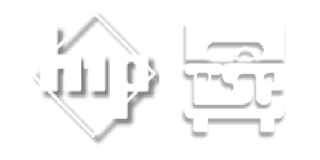PREPARE A OSHA PANDEMIC/CORONAVIRUS PREPAREDNESS, PREVENTION AND TRAINING PLAN FOR YOUR WORKERS, NOW!
Protecting workers from this and future pandemics will be the major focus of OSHA worker protection 29 CFR initiatives in the coming weeks, months and years.
Don’t wait. Be ready, prepare now, You will need a pandemic preparedness and prevention and training plan, for those currently working and workers returning to work. OSHA has already published strict guidelines for protecting workers in this and any other pandemics that might threaten our country, economy and it’s workers again.
Prepare to Implement Basic Infection Prevention Measures
You must provide training on;
The importance of frequent and thorough hand washing, including those of workers, customers, and worksite visitors.
The need and importance of workers staying home if they are sick.
Respiratory etiquette, including covering coughs and sneezes.
The locations customers and the public can find and access tissues and trash receptacles.
The policies and practices you have established; such as flexible worksites (e.g., telecommuting) and flexible work hours (e.g., staggered shifts), to increase the physical distance among employees and between employees, including social distancing strategies.
The nonessential use of other workers’ phones, desks, offices, or other work tools and equipment.
The company’s housekeeping practices, including the routine cleaning and disinfecting of surfaces, equipment, and other elements of the work environment. Including the manufacturer’s instructions for use of all cleaning and disinfection products (e.g., concentration, application method and contact time and any PPE requirements.
You will need to Develop a Pandemic Preparedness. Prevention and Training Plan (PPPTP)
You must prepare and deal with;
Where, how, and to what sources workers could be exposed, including: The general public, customers, and coworkers;
The Non-occupational risk factors at home and in community settings.
Workers’ individual risk factors (e.g., older age; presence of chronic medical conditions, including immunocompromising conditions; pregnancy).
Controls necessary to address workers risks.
You must develop the tools to;
Decrease rates of worker absenteeism.
Use social distancing, staggered work shifts, downsizing operations, delivering services remotely, and other exposure-reducing measures.
Continue essential operations with a reduced workforce, by cross-training key workers across different jobs in order to continue operations or deliver surge services.
Sourcing your supply, warehouse or delivery chains
Implementing Policies and Procedures for Prompt Identification and Isolation of Sick and healthy employees.
You must Properly address;
How Employers should inform and encourage employees to self-monitor for signs and symptoms, when they suspect possible exposure.
To who or by what process can employees report when they are sick or experiencing symptoms.
The immediate isolation of workers who have signs and/or symptoms, and correct ways in which to move potentially infectious people to locations away from workers, customers, and other visitors.
The use of specific isolation rooms, such as areas with closable doors to house workers, until a potentially sick person can be removed from the worksite.
Law from guidelines; for example; the difference between PPE and a face mask. Surgical masks or a procedure mask on a patient or other sick person should not be confused with PPE for a worker; the mask acts to contain potentially infectious respiratory secretions at the source (i.e., the patient's nose and mouth).
The Protection of workers in close contact with a sick person or any worker who has had prolonged/repeated contact with such persons by use or PPE, work, practice or medium and very high or high exposure risk classification by job function.
These are just the basics, and I will have more to come, download OSHA’s guidelines, let us know if you need help or require someone to write a pandemic prevention preparedness and training plan (PPPTP) for your company. Don’t hesitate to call or contact us. Don’t be caught off guard next time. “Prepare Now”.
Robert J Keegan
Publisher and president
Hazardous materials publishing company
Transportation skills programs Inc.
hazmat.tsp@gmail.com
